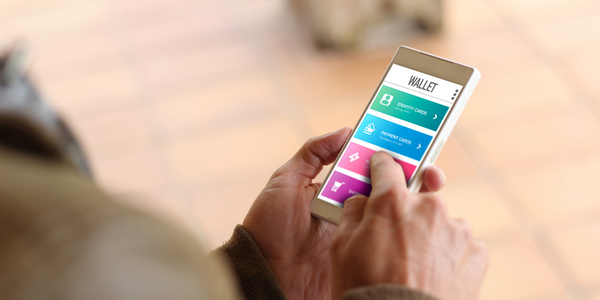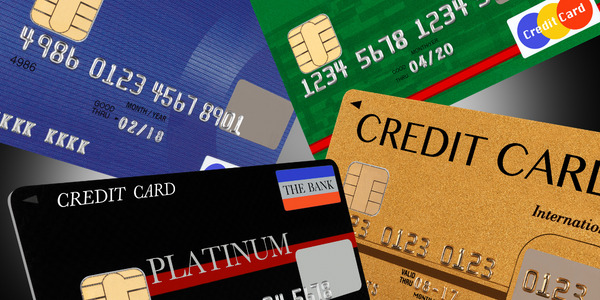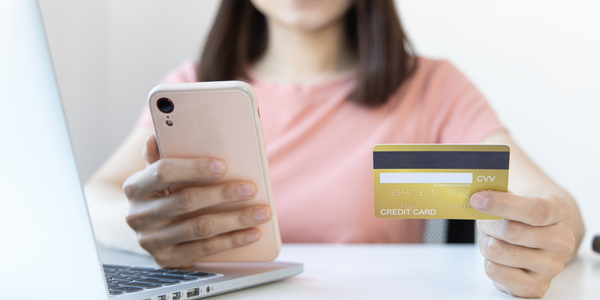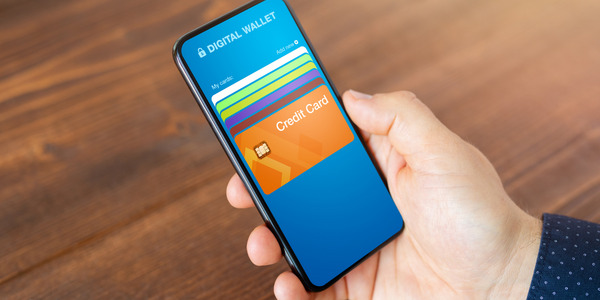
In recent years, digital wallets have become an increasingly popular way to pay for goods and services. Instead of using cash or credit and debit cards, digital wallet users can simply store payment information for easy use later or tap their phone or other devices to complete a transaction. In 2020, mobile wallet payments made up 21.5% of payment transactions.
This convenience is one of the main reasons why digital wallets are becoming so popular. However, digital wallets are also changing the way that freight logistics payments are made.
In the past, most logistics transactions occurred via paper invoices and paper checks to complete payment transactions. However, with the advent of digital wallets and other forms of electronic wallets, those involved in payment transactions across the supply chain are now using digital payments via such as RoadSync Checkout to streamline their payment process.
This shift to digital payments is likely to continue in the future as digital wallet adoption rates continue to grow.
Technology has revolutionized the way we live and work, and digital wallets make our lives simpler and more efficient. A digital wallet is a digital version of a traditional wallet that stores credit and debit cards, mobile payments, and other digital payment methods. Unlike a traditional wallet, a digital wallet can be accessed from anywhere with an internet connection.
This makes it perfect for those involved in freight logistics businesses such as truck drivers, warehouse staff and heavy duty repair and shop owners, who need to request, receive and make quick, easy payments without the hassle of carrying cash or dealing with paper checks.
In addition, digital wallets are extremely secure, as they use advanced encryption technology to protect your personal information. In this blog, we’ll provide more details on what a digital wallet is and what they are not, how digital wallets work, the benefits and what that means for modernizing payments across the supply
What is a digital wallet?
A digital wallet, also sometimes referred to as a mobile wallet, is a digital storage space for various payment information. It can include credit and debit card information, bank account details, and other information related to your finances. This information can then be used to make digital payments, either through a dedicated digital payment app or a mobile payments app.
Digital wallets are becoming increasingly popular as payment technology advances, making it simpler and more secure for consumers to make payments online or in-store. Many digital wallets also offer enhanced security features, such as two-factor authentication or fingerprint scanning, to help protect your payment information.

Is a digital wallet the same as a bank account?
While both digital wallets and bank accounts involve managing money and making payments, a digital wallet is not the same as a bank account.
Bank accounts offer different security measures, as they are subject to federal regulations—this doesn’t mean that digital wallets are unsafe; more on this later. Some banks are FDIC-insured, which helps protect against loss if the bank fails. In addition, bank accounts may come with fees, such as monthly maintenance fees and transaction fees. While bank accounts can be linked to pay bills and may have credit or debit cards associated with the account, an individual cannot go to a merchant or retailer and pay with their bank account information.
Digital wallets, on the other hand provide a more convenient way to pay for things. With a digital wallet, you can add money using your mobile phone or another device, as well as store a credit card or debit card to make payments without having to carry cash, paper checks or credit and debit cards.
How does a digital wallet work?
A digital wallet is a digital account that can be used to store, send, and receive funds. A digital wallet can be used to make online purchases, send money to friends and family, or accept payments from others. A digital wallet can also store gift cards, loyalty cards and vouchers.
Digital wallets are usually accessible via a mobile application or web browser offering a convenient and secure way to send, and receive payments. Powered by various cloud-based applications, a digital wallet lets you link payment information such as your credit or debit card and even a bank account to engage in financial transactions without the need to carry cash, paper checks or a physical credit card.
Digital wallets leverage different technologies to make payments possible such as:
QR Code
QR codes are two-dimensional barcodes that can be read by smartphones and other devices. When you use a digital wallet, the QR code is scanned by your phone to begin the payment process.
Near Field Communication (NFC)
Near field communication or NFC, is a type of wireless communication that allows digital devices to exchange data over short distances. NFC is often used for contactless payments, such as mobile pay, as it allows for a quick and easy way to transmit financial information. When you use your digital wallet to make a purchase with NFC, your device transmits your payment information to the retailer’s terminal using radio waves. The terminal then sends a confirmation signal back to your device, completing the transaction. NFC is a convenient way to make payments, as it doesn’t require you to input your information each time you make a purchase. Additionally, NFC payment technologies are typically more secure than traditional methods, such as swiping a credit card, as they use encryption to protect your personal data.
Magnetic Secure Transmission (MST)
MST is a payment technology that allows digital wallets to communicate with traditional magnetic stripe readers. Essentially, it transmits the information from your digital wallet to the card reader just as if you were swiping a physical credit or debit card. This makes MST a valuable tool for businesses who want to accept digital payments but don’t have the necessary equipment to do so. It’s also useful for customers who want to use their digital wallets in places where NFC (near-field communication) isn’t accepted. All in all, magnetic secure transmission is a convenient way to make digital payments seamlessly work with older payment technologies.

Types of digital wallets
Beyond the various means for initiating payments from digital wallets, there are also different types of digital wallets that will impact how and where a digital wallet works.
There are two main types of digital wallets: open and closed. Similar to a closed versus open payment network, each type of wallet has its own unique benefits.
Open Wallet
An open digital wallet can be used with a number of different merchant that accepts mobile payments. An example of one popular open digital wallet is PayPal, which can be used to make online purchases or send money to friends and family
Semi-Closed or Closed Wallet
In contrast, a semi-closed or closed wallet can only be used with merchants that have partnered with the digital wallet provider, meaning in some cases the digital wallet only works at a single location or can only be used at locations with participating merchants. That said, closed digital wallets may offer more features and benefits than open digital wallets, such as loyalty programs and cash back rewards.
Pros and Cons of Digital Wallets
From a consumer standpoint, there are many digital wallet providers, such as Apple Pay, Google Pay Android Pay, and Samsung Pay. Each digital wallet provider has its own advantages and disadvantages, and digital wallets are not just for the consumer but are making their way into payment transactions across different businesses.
Pros
There are several advantages of using digital wallets. First, digital wallets are more convenient than traditional payment methods, such as cash or checks. Digital wallets allow consumers to pay for goods and services without having to carry around physical payment methods.
Second, digital wallets are more secure than traditional payment methods. When a digital wallet is linked to a credit or debit card, the card number is not stored on the device. Most digital wallets encrypt and tokenize data making it more secure than traditional credit or debit card transactions.
With increased security, digital wallets also reduce the likelihood of a user’s financial information being hacked and therefore lessening fraudulent charges. Worldpay research actually compared the rate of chargebacks for credit cards and digital wallets and found that digital wallets have a 99.6% lower chargeback volume than credit cards.
Finally, digital wallets may help businesses save money on transaction fees.
Cons
While there are a number of benefits to using a digital wallet, there may be some disadvantages as well.
As with any technology, digital wallets are subject to technical problems, such as system outages or compatibility issues. However, in today’s world with the rise and ease of mobile payments, the benefit to leverage the convenience of a digital wallet may outweigh a potential technical problem.
Second, digital wallet users may be reluctant to share their personal information, such as their credit or debit card numbers with businesses. As a merchant offering or participating in a digital wallet network, it is important to reiterate with customers that even when a digital wallet is created and a customer chooses to store or save their information, businesses don’t have access to the actual financial credit card data.

Modernizing Logistics Payments with Digital Wallets
Digital payments are changing the game when it comes to freight logistics payments. In the past, individuals across the supply chain used paper checks or manual invoicing processes to pay fees.. This was a cumbersome and often unreliable system, with payments often getting lost in the shuffle. But with digital wallets, logistics payments can be made quickly and easily, making it easier for customers and drivers to access a payment method from a mobile device versus fumbling for cash, paper checks and so forth. This makes it easier for those across the logistics supply to keep track of their payments and ensure payments are being made faster and more revenue is captured.
Saving Time across the Supply Chain
Offering drivers a means to store a payment method in a mobile wallet for future use not only makes it more convenient for the driver, and possibly their broker or carrier, but saves everyone time from warehouse staff to heavy duty repair and tow shops.
Make it Easy to Get Paid with RoadSync’s Digital Wallet


